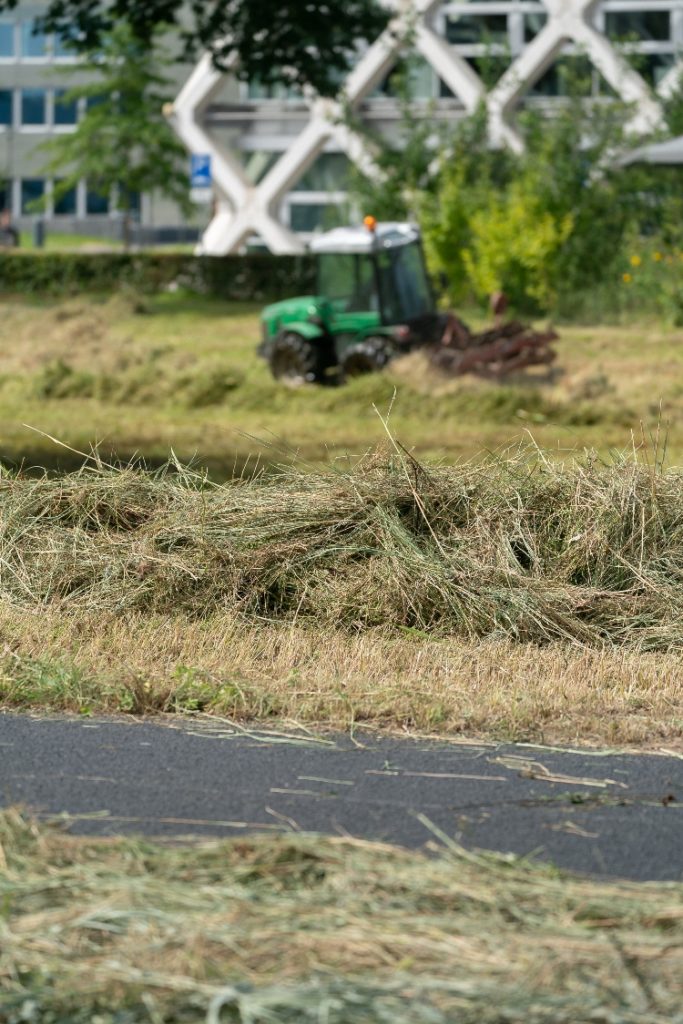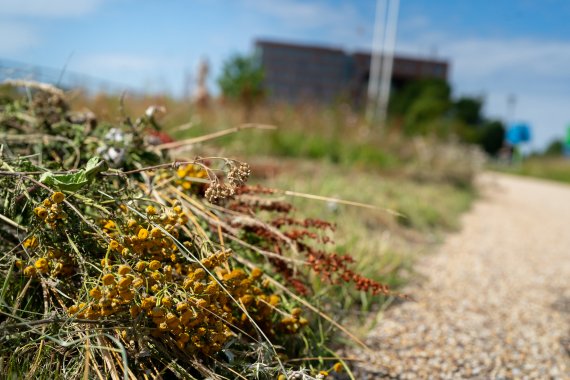©Sven Menschel
Ecologist Wieger Wamelink is on the team that manages the natural garden behind Lumen and the wetland garden near Atlas, which were mown this week. ‘It hurts me too to mow when the garden is in bloom and full of insects of all kinds,’ says Wamelink. But the decision to mow was not taken heedlessly. ‘If we don’t mow, we shall lose all the beautiful, rare plant species in a couple of years. And we must prevent that.’
Biodiversity
Grass and reeds grow in various parts of the gardens. That is not beneficial, says Wamelijk, as those plant species take over the garden, leaving little room for other, sometimes rare, species. Then the garden loses biodiversity. ‘By mowing at the right time, we can prevent that loss,’ says Wamelink.
The campus gardens are mown three times a year at times laid down in a two-year calendar. Grasslands that are mown early one year are allowed to go on growing longer the next. But the garden managers do not follow the schedule blindly. They keep a close eye on the gardens and have them mown when nature is ready for it. And this year, that was three weeks later than planned.
If we don’t mow, we shall lose all the beautiful, rare plant species in a couple of years
Wieger Wamelink, WUR-ecologist
Rhinanthus is decisive
The delay was related to plant growth. ‘Because of the dry spring, the plants grew more slowly than usual,’ says Wamelink. So some plants still hadn’t seeded at the beginning of July. Those seeds are essential for plants such as the yellow rattle (rhinanthus), says Wamelink. ‘We don’t mow until the yellow rattle has seeded.’
This plant is so important because it is a root parasite of grasses, stealing their nutrients and thus slowing their growth. This creates more space and increases the chances of survival for other plants species. ‘The seed of the yellow rattle only keeps for a year so if we mow too early, we lose it for good,’ says Wamelink.
It is not just the yellow rattle that determines the mowing schedule. The garden managers also keep an eye on the volume of biomass in the gardens. If too many plants are growing somewhere, they mow that part of the garden earlier. ‘We’ve been doing that for a few years in the part of the garden right behind Lumen,’ says Wamelink. That prevents one plant species from taking over the garden and it is also a way of removing excess nitrogen from the system with the biomass.

Phased mowing
‘We don’t mow everything in one go, but in phases,’ says Wamelink. ‘One of the reasons we do that is for the insects.’ Certain areas of the gardens are also left undisturbed for a whole year. Those areas give insects a place to overwinter.
So it is feasible to avoid mowing to a certain extent, but stopping altogether is not an option. ‘Grasslands are not natural systems and if we let nature run its course, the gardens would fill up with trees.’ Nor is it possible to wait until everything has flowered, as some of the plants only flower in late autumn.
Partly thanks to regular mowing, the gardens of WUR contain rare plants including dragon’s teeth and orchids such as themilitary orchid.
Military orchid on campus
Organisation – 26 May 2020-There is a military presence in the natural garden behind the Lumen…

